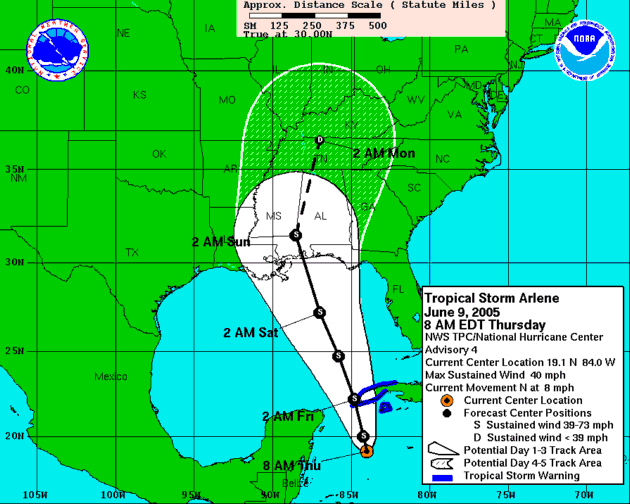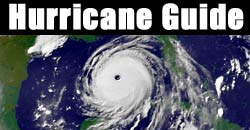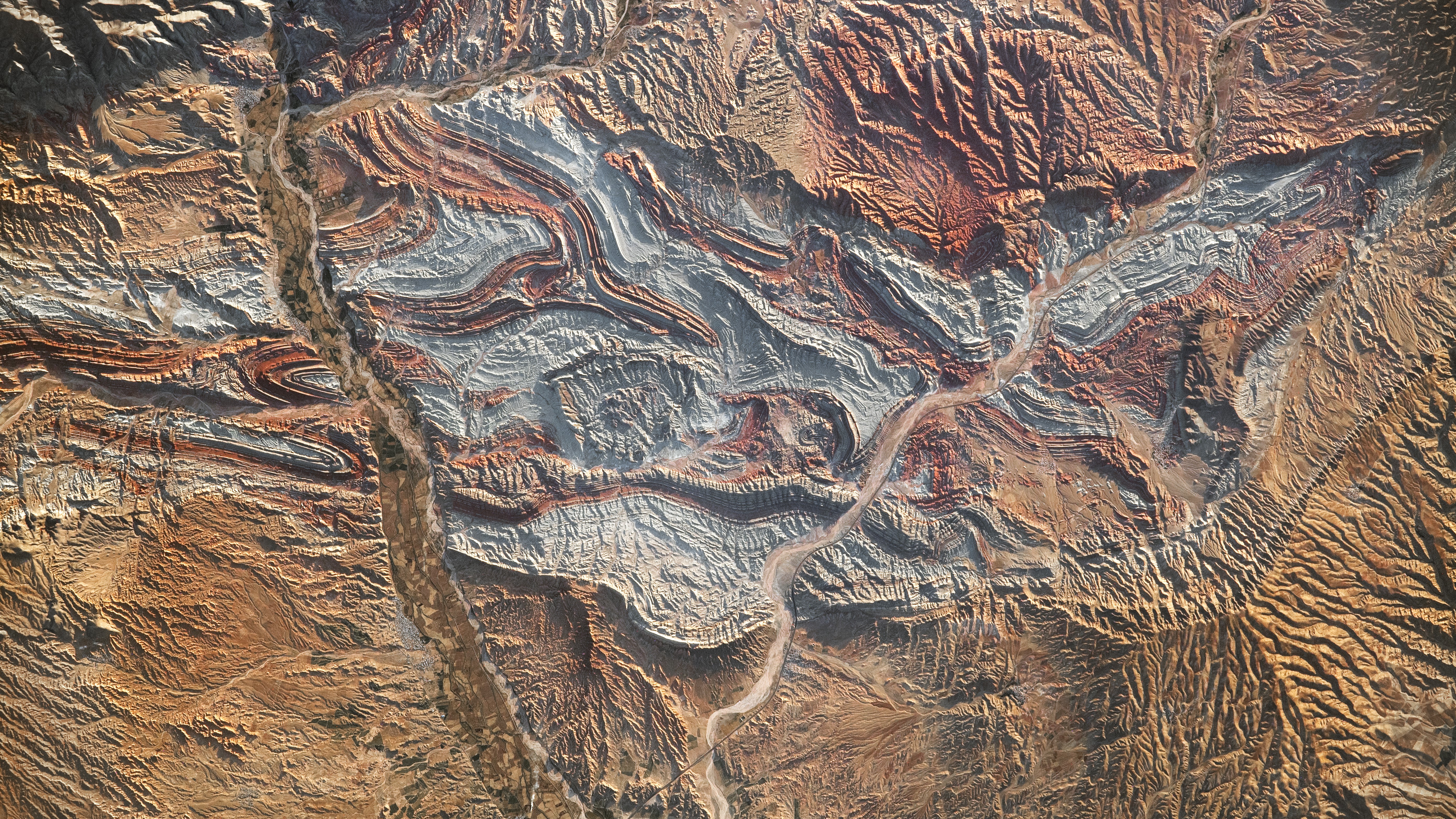First Tropical Storm of 2005 Aims at U.S. Gulf Coast

The season's first tropical storm has formed in the Caribbean, prompting warnings for parts of Cuba and a prediction of eventual landfall in Florida or elsewhere along the U.S. Gulf Coast.
Tropical Storm Arlene had sustained winds of 40 mph early Thursday after developing into a named storm from a tropical depression yesterday.
"Some additional slow strengthening is possible during the next 24 hours," according to a statement Thursday morning from the National Hurricane Center.
A satellite view shows the storm's broad reach is already sending clouds over Florida. As of now, the storm is not expected to develop into a hurricane, however.
Arlene represents a fairly early start to the season, which began officially June 1. The busiest months are traditionally August and September. Last year's first tropical storm did not form until Aug. 1.
A tropical storm warning is now in effect for western Cuba from Pinar Del Rio to the Havana province. Heavy rain is already spreading across the Cayman islands and into Cuba. Heavy rains and flash floods could also hit Nicaragua and Honduras, officials said.
At 8 a.m. ET Arlene was 185 miles west of Grand Cayman island and about 190 miles south-southeast of the western tip of Cuba.
Sign up for the Live Science daily newsletter now
Get the world’s most fascinating discoveries delivered straight to your inbox.
Tropical storm winds run from 39 mph to 74 mph, the threshold for hurricane status.
Arlene is expected to come ashore somewhere between Louisiana and the Florida Panhandle over the weekend [Map].
"Interests elsewhere in the northwestern Caribbean and the southeastern Gulf of Mexico should closely monitor the progress of this system," the statement from the hurricane center read.
The Atlantic basin hurricane season began June 1. Forecasters said they expect a busy year again on the heels of last year's battering of Florida and other states.

The science of monster storms.
Busy 2005 Season Predicted The official season forecast from the National Hurricane Center.
The Deadly 2004 Season Officials say lessons learned will save lives in the future.
Rare One-Two Punch A pair of tropical storms are imaged at once.
Robert is an independent health and science journalist and writer based in Phoenix, Arizona. He is a former editor-in-chief of Live Science with over 20 years of experience as a reporter and editor. He has worked on websites such as Space.com and Tom's Guide, and is a contributor on Medium, covering how we age and how to optimize the mind and body through time. He has a journalism degree from Humboldt State University in California.











